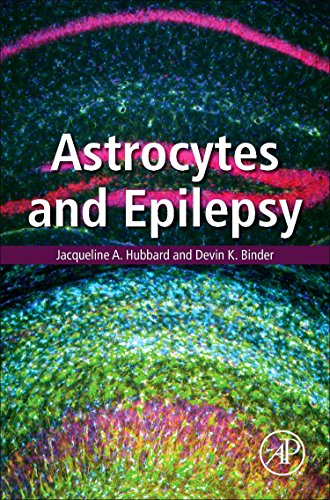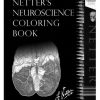(Ebook PDF) Astrocytes and Epilepsy 1st Edition by Jacqueline Hubbard, Devin Binder isbn 9780128026243 0128026243 full chapters
$50.00 Original price was: $50.00.$35.00Current price is: $35.00.
(Ebook PDF) Astrocytes and Epilepsy 1st Edition by Jacqueline Hubbard, Devin Binder-Ebook PDF Instant Download/Delivery:9780128026243, 0128026243
Instant download Full Chapter of Astrocytes and Epilepsy 1st Edition after payment

Product details:
ISBN 10:0128026243
ISBN 13:9780128026243
Author: Jacqueline A. Hubbard; Devin K. Binder
Epilepsy is a devastating group of neurological disorders characterized by periodic and unpredictable seizure activity in the brain. There is a critical need for new drugs and approaches given than at least one-third of all epilepsy patients are not made free of seizures by existing medications and become “medically refractory”. Much of epilepsy research has focused on neuronal therapeutic targets, but current antiepileptic drugs often cause severe cognitive, developmental, and behavioral side effects. Recent findings indicate a critical contribution of astrocytes, star-shaped glial cells in the brain, to neuronal and network excitability and seizure activity. Furthermore, many important cellular and molecular changes occur in astrocytes in epileptic tissue in both humans and animal models of epilepsy. The goal of Astrocytes and Epilepsy is to comprehensively review exciting findings linking changes in astrocytes to functional changes responsible for epilepsy for the first time in book format. These insights into astrocyte contribution to seizure susceptibility indicate that astrocytes may represent an important new therapeutic target in the control of epilepsy.
Astrocytes and Epilepsy includes background explanatory text on astrocyte morphology and physiology, epilepsy models and syndromes, and evidence from both human tissue studies and animal models linking functional changes in astrocytes to epilepsy. Beautifully labelled diagrams are presented and relevant figures from the literature are reproduced to elucidate key findings and concepts in this rapidly emerging field. Astrocytes and Epilepsy is written for neuroscientists, epilepsy researchers, astrocyte investigators as well as neurologists and other specialists caring for patients with epilepsy.
- Presents the first comprehensive book to synthesize historical and recent research on astrocytes and epilepsy into one coherent volume
- Provides a great resource on the field of astrocyte biology and astrocyte-neuron interactions
- Details potential therapeutic targets, including chapters on gap junctions, water and potassium channels, glutamate and adenosine metabolism, and inflammation
Table of Contents:
- Chapter 1. History of Astrocytes
- Abstract
- Overview
- Neuron Doctrine
- Development of the Concept of Neuroglia
- Wilder Penfield, Pío Del Río-Hortega, and Delineation of the “Third Element”
- Beginning of the Modern Era
- References
- Chapter 2. Astrocytes in the Mammalian Brain
- Abstract
- Overview
- Classification of Neuroglia and Astrocyte Types in the CNS
- Phylogeny of Astrocytes
- Multifaceted Physiological Roles of Mammalian Astrocytes
- Tripartite Synapse
- Neurological Diseases as “gliopathies”
- References
- Chapter 3. Gliotransmitters
- Abstract
- Overview
- A Neurocentric View
- Astrocytes at the Synapse
- Bidirectional Communication Between Neurons and Astrocytes
- Release of “Gliotransmitters” from Astrocytes
- Mechanisms of Gliotransmission
- Effects of Gliotransmission
- Gliotransmission Controversy
- Conclusions
- References
- Chapter 4. Types of Epilepsy
- Abstract
- Overview
- Seizures and Epilepsy
- International League Against Epilepsy Classification
- Animal Models of Epilepsy
- Medical Management of Epilepsy
- Why Glial Cells?
- References
- Chapter 5. Neuropathology of Human Epilepsy
- Abstract
- Overview
- Hippocampal Sclerosis
- Tumor-Associated Epilepsy and LEATs
- Focal Cortical Dysplasias
- Tuberous Sclerosis
- Posttraumatic Epilepsy
- Poststroke Epilepsy
- Summary: Value of Human Tissue Data and Research
- References
- Chapter 6. Astrocyte Calcium Signaling
- Abstract
- Overview
- Calcium-Induced Exocytosis
- Astrocyte Calcium Signaling in Epilepsy
- Conclusion
- References
- Chapter 7. Potassium Channels
- Abstract
- Overview
- Alterations in K+ Homeostasis in Human Epilepsy
- References
- Chapter 8. Water Channels
- Abstract
- Overview
- Water and Ion Homeostasis and Epilepsy
- Aquaporins
- Conclusions
- References
- Chapter 9. Glutamate Metabolism
- Abstract
- Overview
- Metabolism in the Brain
- Glutamate Homeostasis in the Brain
- Conclusion
- References
- Chapter 10. Adenosine Metabolism
- Abstract
- Overview
- Purinergic Signaling and Metabolism
- Adenosine Metabolism and P1 Receptors in Epilepsy
- Therapeutic Modulation of Adenosine
- P2 Receptors
- P2 Receptors in Epilepsy
- Conclusion
- References
- Chapter 11. Gap Junctions
- Abstract
- Overview
- History
- Structure
- Cellular Distribution and Function
- Human Tissue Studies
- Knockout Mice Studies
- Fast Oscillation and Seizure Synchronization
- Experimental Models of Epilepsy
- Pharmacological GJ Blockers
- Conclusion
- References
- Chapter 12. Blood–Brain Barrier Disruption
- Abstract
- Overview
- History
- Structure and Function
- BBB Disruption in Epilepsy
- BBB Disruption as a Candidate Biomarker
- Conclusion
- References
- Chapter 13. Inflammation
- Abstract
- Overview
- Immune Response in the Brain
- Neuroinflammation and Epilepsy
- Leukocyte Infiltration
- Antiinflammatory Drugs as a Potential Treatment for Epilepsy
- Conclusion
- References
- Chapter 14. Therapeutic Targets and Future Directions
- Abstract
- Overview
- New Astrocyte-Based Therapeutic Targets
People also search:
how do astrocytes support neurons
how to increase astrocytes in the brain
what do astrocytes do in the nervous system
how does epilepsy affect the hippocampus
astrocytes and seizures
Tags:
Jacqueline Hubbard,Devin Binder,Epilepsy,Astrocytes


